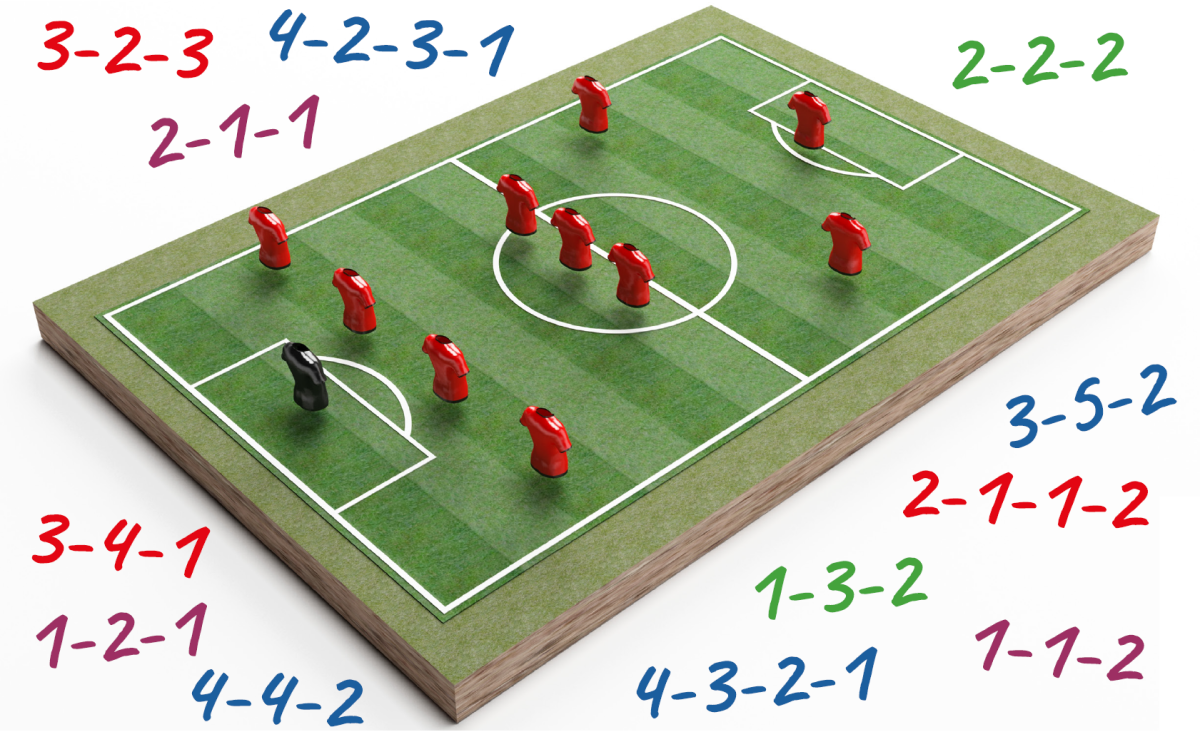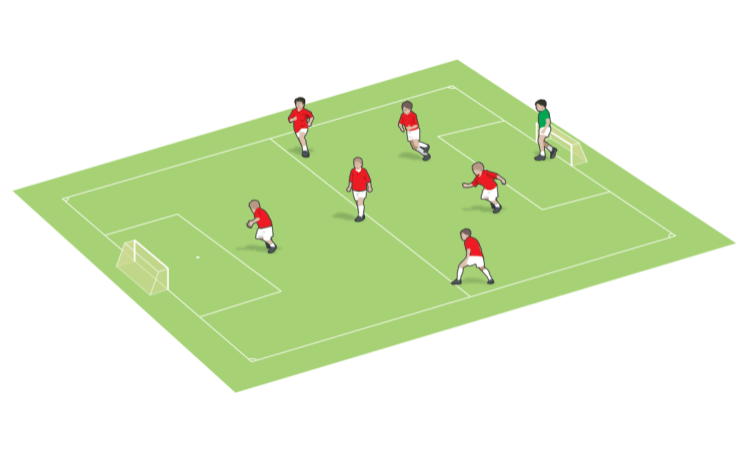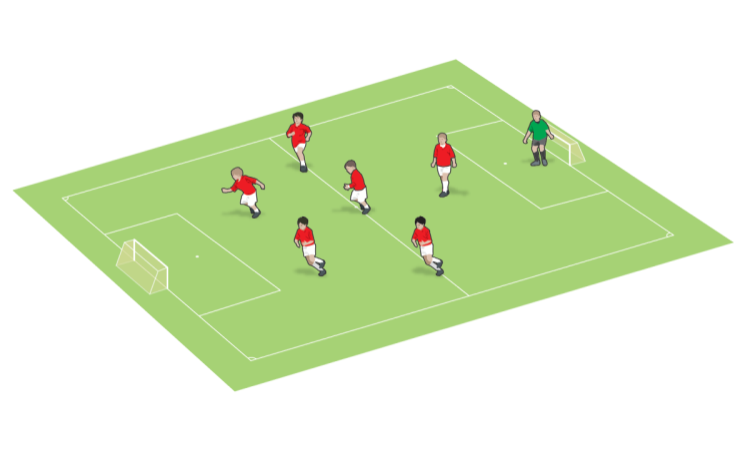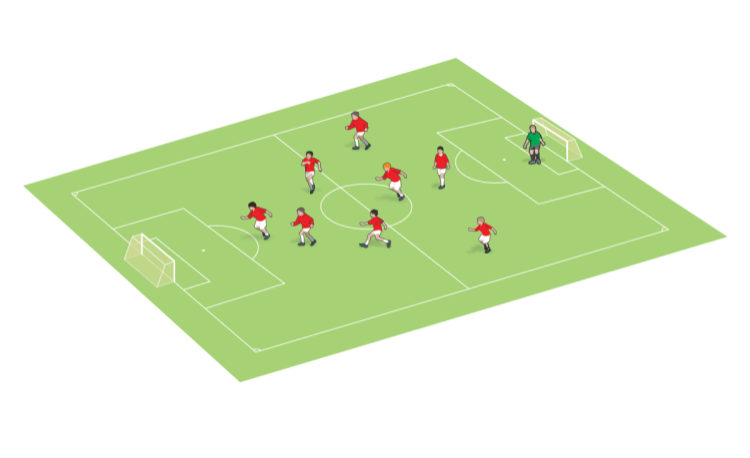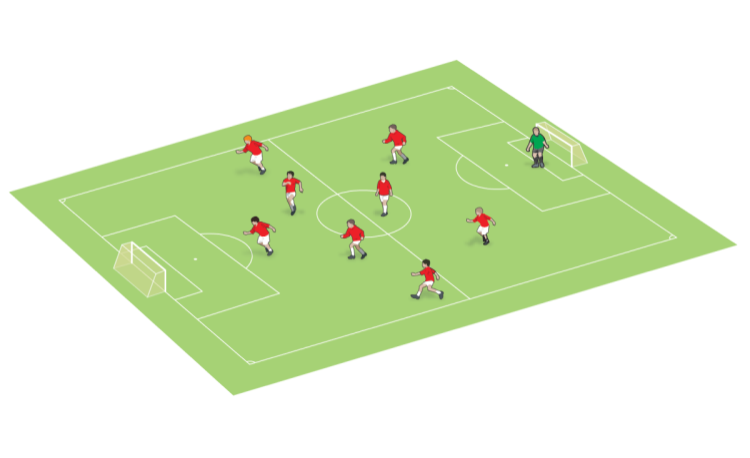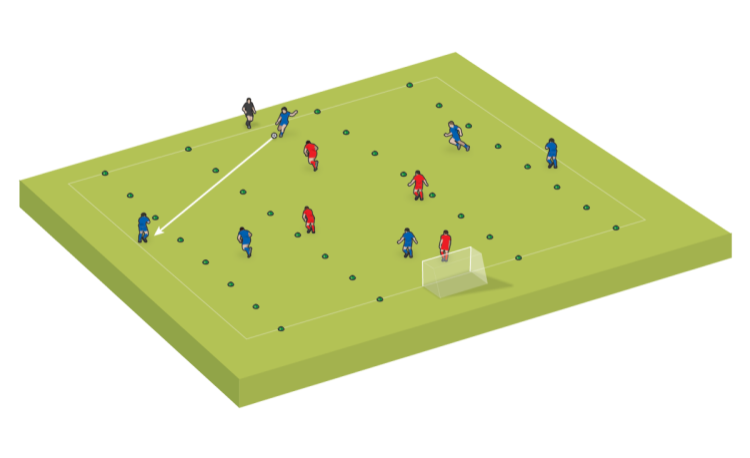What is a formation?
From a simple 1-2-1 at five-a-side to complex strategies at the elite level, Steph Fairbairn explains the basics behind choosing, and then using, a team shape.
A team’s formation is the way they set up on the pitch.
It describes the shape that they play in and the position the players take in relation to each other.
Of course, soccer is a fluid game in which players move around the field. A formation gives teams and players some guidance as to how they might move and what their duties are, both when attacking and defending.
The presentation of formations
You will often see formations denoted as numbers.
For example, in the 11-a-side game, teams may opt to play a 4-4-2 - that is four defenders, four midfielders and two attackers - or 4-3-3, which is four defenders, three midfielders and three attackers.
Usually, the numbers don’t include the goalkeeper, just all of the outfield players, and always go from the players furthest back to the players furthest forward.
However, you may hear some coaches, particularly in youth soccer, include the goalkeeper as a ’1’ before the rest of the formation. This is often done to promote inclusivity around the role of the goalkeeper. Here, though, we will stick with the most common format throughout.
"A formation gives players guidance as to their attacking and defending duties..."
Some formations might require four numbers: for example, 4-2-1-3. This indicates there are four defenders, two defensive midfielders, one more attacking midfielder, and three forwards. This could, however, also be called a defensive 4-3-3.
Some may use five numbers. 4-1-2-1-2 is an example. This indicates four defenders, one defensive midfielder, two central midfielders, an attacking midfielder and two attackers. This could also be called a 4-4-2 diamond.
The word ‘diamond’ refers to the shape the midfielders make when in their starting position.
How to choose a formation
All formations have their different pros and cons.
Some formations may mean you have more capabilities in defence – for example, in 11-a-side, a formation with four defenders, rather than three. Some may lend themselves more to wide play when attacking, while others may promote more attacks through the middle.
At the elite level, where it’s about winning games and getting points on the board, formations are chosen to allow for the strongest possible team to play, or to match up with, or cancel out, the threat of the opposing team.
In the youth game, however, choosing a formation should be based on two things:
- The strengths of your players
- The opportunity for your players to learn, grow and develop
Of course, all of the soccer principles of play – both the in possession and out of possession principles – will be present in every formation and every game.
However, some formations will lend themselves more to working on different principles – as a team, a unit or a specific position.
Different formations will present different opportunities and different challenges. As coaches, we want to choose a formation that lets as many of our players as possible build on and further develop their strengths, while also allowing players to come up against new situations in order to improve their abilities.
Look at your players, consider their strengths and areas for development and think about what will benefit them.
How do formations progress through the different formats?
One of the reasons that young players don’t start with 11-a-side soccer straight away is to allow them to get to grips with how the game is played in an environment that is suited to their age and physical abilities.
So, as a player grows up and moves from four or five-a-side, to seven-a-side, to nine-a-side and then, ultimately, 11-a-side, they are layering knowledge and understanding of the game.
Formations can be linked through the different formats. A 2-3-1 formation at seven-a-side, for example, can progress to a 3-4-1 or a 3-3-2 at nine-a-side, which can then become 4-4-2 at 11-a-side.
This is something to think about as your players move from one format to the next: what formation are they used to? How can the formation used in the new format match some of these principles?
How important is a formation?
A formation is important as it gives players a framework in which to understand their role and learn more about the game.
At youth levels, however, we shouldn’t get too caught up in which formation we choose. After all, the principles of play, and the skills needed to be a successful soccer player, exist across all formations.
If you are unsure about what formation to go with, keep it simple. If you coach a team that is part of a club, they may have a preferred formation, or a set of them that run through the age groups, helping players to progress from small-sided soccer to 11-a-side.
Be consistent with your formation, too. Don’t flit from one to another. Stick with one or two formations for your team and let them develop within that framework.
Once you have chosen your formation, the important thing is to be communicate it clearly to your players.
Let them know what the formation is, how the different positions work together and what their individual roles and responsibilities are within the team, both in and out of possession.
How many formations should my team be able to play?
At the younger age groups – certainly when playing four- and five-a-side, and at the younger ages of seven-a-side - one formation is enough, particularly when the focus is on learning the basics of the game..
As you get into the later years of seven-a-side, and then into nine-a-side and 11-a-side, it might be a good idea to start thinking about introducing a second formation.
This will give your players options in terms of different challenges and ways to set up against different opposition, and help them to understand the game and its principles in different ways.
It can also give you different ways to cater for the strengths and areas of improvement for different players.
Stick to learning one first, though, before moving onto a second, so as to not confuse your players.
What are the most common soccer formations?
4/5-a-side - Four outfield players/one goalkeeper and four outfield players
- 2-2
- 2-1-1
- 1-2-1
- 1-1-2
7-a-side - One goalkeeper and six outfield players
9-a-side - One goalkeeper and eight outfield players
11-a-side - One goalkeeper and 10 outfield players
- 5-3-2
- 4-5-1
- 4-4-2
- 4-3-3
- 4-3-2-1
- 4-2-3-1
- 3-5-2
- 3-4-3
Related Files
Newsletter Sign Up
Coaches Testimonials

Gerald Kearney, Downtown Las Vegas Soccer Club

Paul Butler, Florida, USA

Rick Shields, Springboro, USA

Tony Green, Pierrefonds Titans, Quebec, Canada
Subscribe Today
Discover the simple way to become a more effective, more successful soccer coach
In a recent survey 89% of subscribers said Soccer Coach Weekly makes them more confident, 91% said Soccer Coach Weekly makes them a more effective coach and 93% said Soccer Coach Weekly makes them more inspired.
*includes 3 coaching manuals
Get Weekly Inspiration
All the latest techniques and approaches
Soccer Coach Weekly offers proven and easy to use soccer drills, coaching sessions, practice plans, small-sided games, warm-ups, training tips and advice.
We've been at the cutting edge of soccer coaching since we launched in 2007, creating resources for the grassroots youth coach, following best practice from around the world and insights from the professional game.
